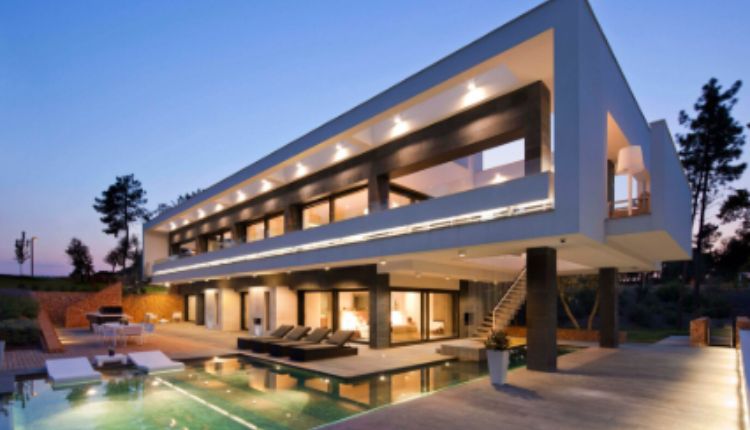In today’s high-end homes, beauty and protection are no longer separate goals. Homeowners who invest in luxurious, carefully curated spaces are also thinking about safety, but not in the traditional sense of bars on windows or clunky alarm panels. They want security that feels seamless, almost invisible, while preserving the ambiance and flow of their environment.
This balance of luxury and peace of mind represents a new frontier in home design. It’s no longer enough to create beautiful spaces; those spaces must also support and safeguard the lifestyles that unfold within them. Designers are working closely with technology experts to create environments where the lines between form and function vanish. And it’s not just about hardware, it’s about integrating a mindset. By adr security, this concept of merging discreet security solutions with personalized elegance has become a defining characteristic of sophisticated living.
Subtle Security, Strong Protection
Modern homeowners expect more than flashing lights and loud sirens. They expect security to be intelligent, anticipatory, and, perhaps most importantly, unobtrusive. The idea is simple but nuanced: protection shouldn’t intrude on daily life or compete with the design vision.
The new standard involves cameras embedded into architectural features, alarm keypads blended into cabinetry finishes, and motion sensors housed within decorative fixtures. Surveillance doesn’t have to scream “monitoring system”, it can quietly watch from the periphery. In high-end properties, everything from lighting to HVAC systems is integrated into a smart ecosystem. Why should security be any different?
And while the aesthetics matter, so does convenience. Touchless entry, remote access, and facial recognition systems add layers of comfort while reducing friction in everyday life. Instead of fumbling with keys or disarming an alarm manually, homeowners can glide through their routines with technology working in the background, quietly and efficiently.
The Designer’s Dilemma, and Opportunity
Interior designers have long wrestled with the challenge of balancing beauty and function, but security introduces a new level of complexity. Where should cameras go without interrupting a sightline? How can motion sensors coexist with minimalist light fixtures? These questions are no longer rare, they’re standard in many luxury home projects.
At TKS Interior Design and Remodeling in Chicagoland, designers have found that addressing security needs early in the design process is essential. When designers and security professionals collaborate from the start, they can pre-wire for systems, coordinate wall placement with surveillance views in mind, and create custom enclosures that double as design features. It’s about transforming limitations into creative possibilities.
This collaboration also helps clients feel empowered. Security isn’t just something “for emergencies”; it’s part of how they experience comfort at home. With the right approach, a security panel can be as carefully chosen as a backsplash tile or pendant light.
Building a Lifestyle, Not Just a Structure
We often think of security in cold, utilitarian terms, something that’s there to prevent bad things from happening. But for many homeowners, especially those who value a tailored lifestyle, security is more about assurance. It’s about knowing your family, pets, artwork, and privacy are protected even when you’re halfway around the world. It’s about having the freedom to live fully without constant worry.
This emotional dimension of security is often underestimated. The truth is, the feeling of safety directly impacts how we engage with our space. We let our guard down. We entertain with more ease. We sleep better. A home that feels secure helps us recharge and reconnect, not just with others, but with ourselves.
This is where luxury design and lifestyle security converge. Both are deeply personal. Both require listening, customization, and foresight. And both can elevate a house into a sanctuary.
The Technology You Don’t See, But Always Feel
In the past, high-tech security was often reserved for commercial properties or ultra-wealthy estates with visible surveillance at every turn. Today, however, even mid-sized luxury homes are equipped with remote-access cameras, silent alarms, smart sensors, and cloud-based monitoring systems.
But what’s changing isn’t just what’s installed, it’s how it’s experienced. Smart mirrors can double as control centers. Camera feeds can be routed through private apps. Homeowners can allow or deny access in real time, from anywhere in the world, without sacrificing the intimacy of their space.
Even architectural details are evolving. Crown molding can conceal camera wiring. Built-in millwork can hide routers and control hubs. Designers are learning to work with, not around, these integrations.
This shift reflects a deeper societal change. As more people work from home, raise families, or entertain in private residences, the need for secure-but-welcoming environments has grown. Security isn’t just about threats; it’s about how we support the lives we’re building.
The Future of Home Is Thoughtfully Protected
In an age of open-concept kitchens, sun-drenched living rooms, and indoor-outdoor transitions, we often focus on openness, open shelving, open sightlines, and open doors. But within that openness, there must be something invisible holding everything together: a quiet confidence that the space isn’t just beautiful, but safe.
The homes of tomorrow won’t be defined only by their finishes or floor plans. They’ll be measured by how well they adapt to their occupants’ needs, both seen and unseen. When security technology is integrated with care and creativity, it enhances a home rather than detracts from it.
Luxury design has always been about intention, every detail considered, every corner crafted. Now, that intention extends to security. Because in the most elegant homes, protection doesn’t interrupt the experience. It enhances it.






